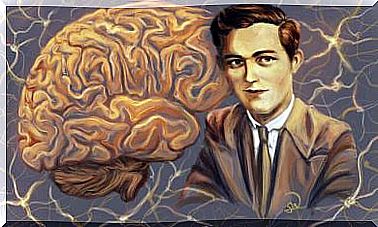Robert Cialdini And The 6 Principles Of Persuasion

Robert Cialdini is a renowned psychologist and researcher at the University of Arizona, in the United States. He became known internationally after publishing his book “Influencia. The Psychology of Persuasion ”, in 1984.
To write this work , Robert Cialdini spent three years undercover. He infiltrated car dealerships, telemarketing companies, charities, and many more. The book compiles all his conclusions and has become a benchmark for the psychology of persuasion.
All his works have always been among the best-selling books, according to the New York Times Business . Likewise, Fortune magazine has highlighted his works within the 100 most intelligent that have been produced in recent decades. In his work, Robert Caldini proposed 6 principles of persuasion that are still applied today in various areas. Are these.
1. Reciprocity, the first principle of Robert Caldini
During his investigations, Robert Cialdini was able to verify a principle that many of us already intuited by common sense. According to their research, people treat others as they perceive others to treat them. So, for example, we tend to be nice to those who treat us kindly. Hence, we have great power, for example, to make a person like us better or worse over time.
Advertising makes use of this principle. The reason why a brand sometimes gives gifts of its products is precisely the principle of reciprocity. They know that consumers appreciate that gesture and become more loyal to the brand for that reason. An example can be seen in a well-known franchise that announces that from now on on Mondays it will give free coffees.

2. The scarcity principle
Robert Cialdini found that people tended to value more what they perceive as rare or exclusive. It doesn’t matter if it really is or not. The point is that when something is listed as only accessible to the very few, it immediately awakens desire.
Advertising also takes advantage of this principle. It is the foundation on which concepts such as “Promotion for a few days”, or “Discount for the first 50 buyers” and similar campaigns are built. They tend to work very well. On the other hand, a continuous succession of “last opportunities” for the same product ends up dissipating this effect.
3. The principle of authority
This principle states that people who have a leadership position or notoriety enjoy greater credibility among the people. Others tend to believe it, simply because it says “x” or “y” figure. They are less critical of celebrities.
Hence, there is such a profitable business around the so-called “influencers”. Others tend to identify with them, to imitate them. In this case they are less demanding with the consistency of what those figures pose. They are more open to believe what they say.

4. Commitment and consistency
Robert Cialdini indicates that the principle of commitment and coherence implies that people are more willing to take actions that are consistent with what they have already done in the past, even if they have not acted in a specially reasoned way. People tend to look for what is affirming and familiar to them.
This persuasion principle is widely applied in sales. To attract new customers, their behaviors and habits are first studied. This gives the guideline to know what type of offer should be made to them. If they are, for example, impulsive people, situations are generated that lead them to act impulsively so that they buy.
5. Consensus or social proof
This principle states that people tend to join the majority. The usual thing is that they bend to the opinion that more followers have. If many think something is correct, others will tend to believe the same. And vice versa. If the majority believe that something is wrong, progressively many more will think that it is.
Hence, in both business and politics great efforts are made to “create trends. ” They are not always inspired by certain or reasonable elements. However, once they start to “form a wave” they are usually successful.

6. The principle of sympathy
This principle has to do with the so-called “halo effect”. It is related to the fact that physically more attractive people have greater persuasiveness. They are unconsciously associated with other positive values such as honesty and success. This effect also occurs with people who cause sympathy for attributes other than physical.
Hence, advertising almost always uses stereotypes that generate this principle of sympathy. Either very beautiful or beautiful models, or people who represent the appearance that awakens identification or desire.

Robert Cialdini’s persuasion principles have had applications in many fields. However, its greatest impact has been in the world of marketing. It can be said that contemporary marketing is fundamentally based on the research of this psychologist.









